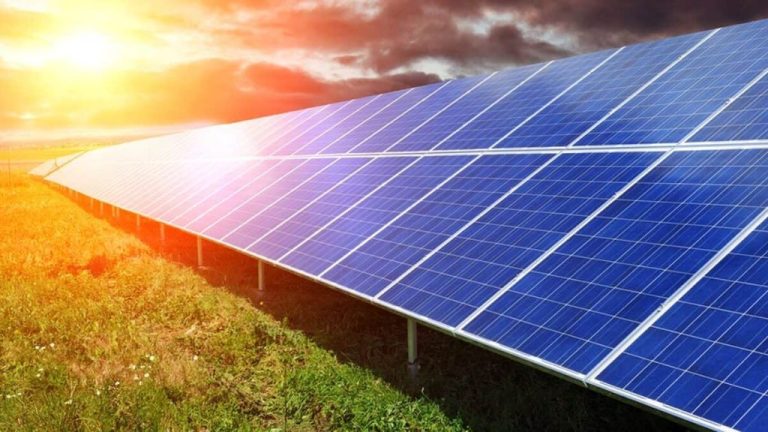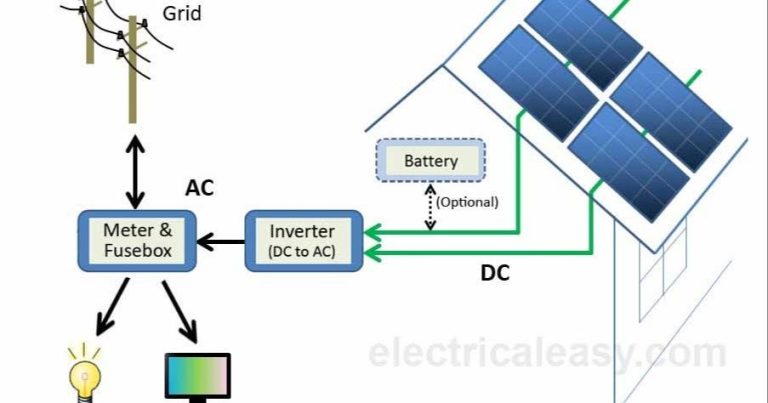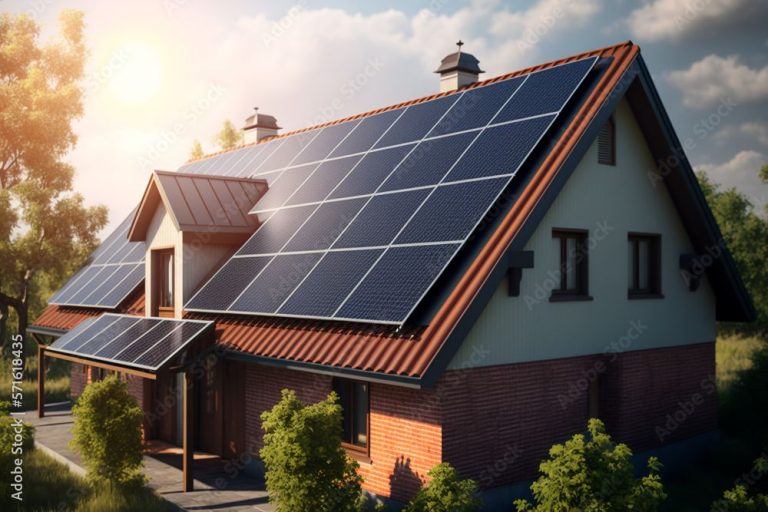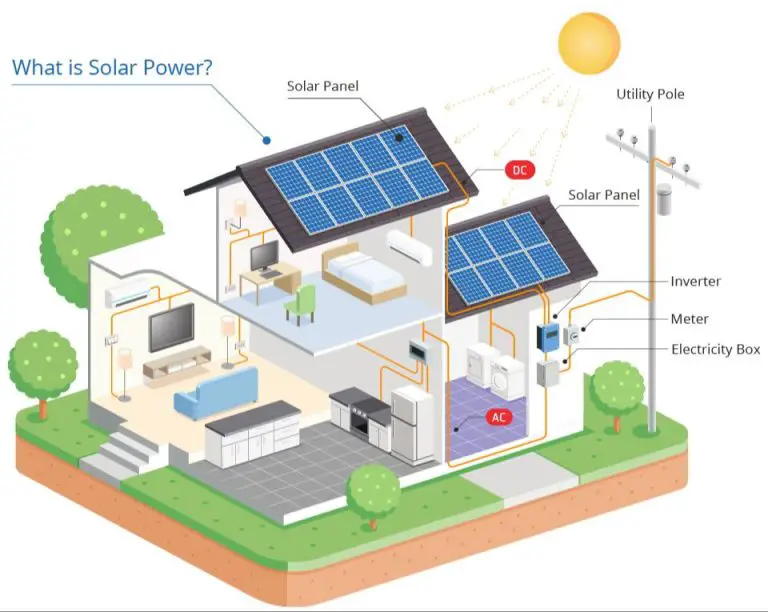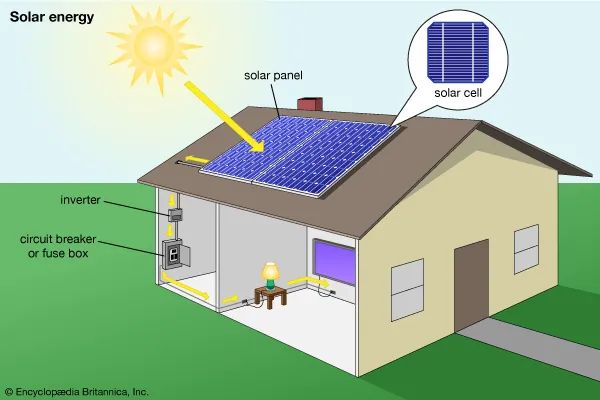How Does A Solar Power System Process?
Solar power is the conversion of energy from sunlight into electricity. It is a renewable and sustainable energy source that has become increasingly important in recent decades as concerns about climate change and energy security have grown.
Humans have utilized solar power passively for millennia, using sunlight to heat homes and water. But active solar power generation only became practical in the 1950s with the invention of the silicon photovoltaic (PV) cell by researchers at Bell Labs. Since then, solar PV has rapidly advanced and come down significantly in cost. It is now one of the cheapest and fastest growing energy sources globally.
Solar power has numerous advantages that have driven its widespread adoption. It produces no air pollution or carbon emissions while operating, allowing it to help combat climate change. Solar only requires sunlight to generate electricity, giving it energy independence and security benefits. It can be deployed at both utility-scale and residential levels, providing distributed power generation. And the fuel (sunlight) is free. With solar costs expected to continue falling, its future looks exceedingly bright.
How Solar Panels Work
Solar panels are able to convert sunlight into electricity through the photovoltaic effect. When photons from sunlight strike the solar cell, they transfer their energy to the semiconductor materials like silicon in the cell. This energy knocks electrons loose from their atoms, allowing them to flow through the material and produce an electric current.
The key components inside a solar panel that enable this electricity generation are:
- Photovoltaic cells – made of semiconducting material like silicon that converts sunlight into direct current electricity.
- Encapsulant – protects the solar cells from environmental damage.
- Transparent cover – the top layer that allows light to pass through while protecting the cells.
- Backsheet – the rear protective layer that insulates and safeguards the solar cells.
- Frame – an aluminum frame provides structural support to the panel.
- Junction box – collects the generated electricity and connects to cables.
The photovoltaic effect occurs inside each individual solar cell, and many cells are connected together and sealed in the panel to produce higher voltages and power output. The generated DC electricity then feeds into an inverter, which converts it into alternating current that can power home appliances, lights, etc.
Types of Solar Panels
There are three main types of solar panels used in solar power systems: monocrystalline, polycrystalline, and thin film. Here’s an overview of each type:
Monocrystalline Solar Panels
Monocrystalline solar panels, also known as single-crystalline silicon cells, are made from silicon ingots that are formed into uniform crystals using a seed crystal. This gives monocrystalline solar cells a distinctive black appearance with visible silicon edges.
Monocrystalline solar panels have the highest efficiency rates since they are made from the highest-grade silicon. The typical efficiency range is between 15-20%. They also have a long lifespan of around 25-30 years. However, they are more expensive than other types of solar panels due to the complex manufacturing process.
Polycrystalline Solar Panels
Polycrystalline solar panels, also known as multi-crystalline silicon cells, are made from melted silicon that is poured into molds to form square wafers. The random crystal formation gives polycrystalline solar cells a speckled blue appearance.
Polycrystalline solar panels have slightly lower efficiency rates of around 13-16% due to the less ordered silicon structure. However, their manufacturing process is simpler and cheaper than monocrystalline panels. Polycrystalline panels also have long lifespans of 20-25 years.
Thin Film Solar Panels
Thin film solar panels are made by depositing one or more thin layers of photovoltaic materials onto a substrate like glass, plastic or metal. Common thin film materials include cadmium telluride (CdTe), copper indium gallium selenide (CIGS) and amorphous silicon (a-Si).
Thin film solar panels have the lowest efficiency rates, typically 7-13%, but benefit from a simple and low-cost manufacturing process. Their flexible nature also allows unique applications not possible with rigid panels. However, thin film panels are more prone to degradation over time.
Other Solar Power System Components
In addition to the solar panels, there are other important components that make up a complete solar power system.
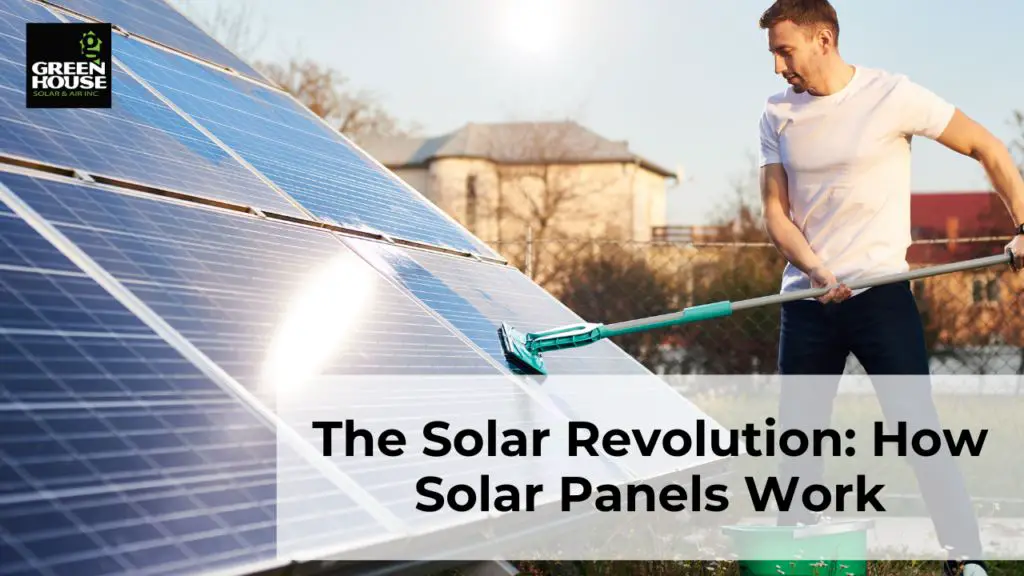
Inverters
An inverter is a crucial device that converts the direct current (DC) electricity generated by the solar panels into alternating current (AC) electricity that can be used to power home appliances and devices. The inverter connects to the solar panels and transforms the DC output into 120V or 240V AC power, which is the standard household electrical current.
Charge Controllers
Charge controllers regulate the voltage and current coming from the solar panels going to the battery bank. Their job is to prevent the batteries from overcharging and getting damaged. Charge controllers prolong the life of the batteries and maximize the energy storage capacity.
Batteries
Solar batteries store the energy produced by the solar panels for use when the sun isn’t shining. Common types are lead-acid and lithium-ion batteries. The batteries allow solar energy to be used at night and during power outages. The size of the battery bank determines how much backup power can be stored.
Wiring
Electrical wires connect all of the solar system parts together – panels, charger controller, inverter, battery bank, and electrical panel. Properly sized wiring prevents energy loss as the electricity travels to its destination. The solar array wiring runs from the panels to the charge controller. Battery cables then run between the controller and batteries.
Installing a Solar Power System
Installing a solar power system requires careful planning and execution. The main steps include obtaining permits, conducting a site survey, mounting the solar panels, and connecting all the components.
Permits
Most locations require permits to install solar panels. The permitting process ensures the solar power system meets local regulations and safety standards. Permits are typically obtained from local zoning or building departments and may require an inspection.
Site Survey
A detailed site survey evaluates the location for solar panel installation. The ideal areas have no shade from trees or structures, face south if in the northern hemisphere, and have strong sun exposure throughout the day. The survey determines the positioning and angle of the panels to maximize solar energy collection.
Panel Mounting
Solar panels are commonly mounted on rooftops or ground mounts. Rooftop mounts attach to rafters and require watertight seals to avoid leaks. Ground mounts are anchored deeply into the soil and elevated to avoid shading. Proper panel orientation is confirmed during mounting.
Connecting Components
After mounting, solar panels connect to wiring that feeds to a charge controller and inverter. The charge controller regulates power flow into batteries for energy storage. The inverter converts DC electricity from panels into AC power used by home devices and appliances. With all components wired correctly, the system can generate power.
Maintaining a Solar Power System
Once a solar power system is installed, some basic maintenance is required to keep it running efficiently for years to come. Here are some key maintenance tasks to remember:
Cleaning Solar Panels
Dirt, dust, pollen, and other debris can accumulate on solar panels over time, reducing their ability to absorb sunlight. It’s recommended to clean off solar panels at least two times per year. Use a soft brush and mild soap and water to gently clean the panels without damaging them. Avoid abrasive brushes or cleaners.
Checking Electrical Connections
Make sure all cables and connections in your solar power system are intact and corrosion-free. Tighten any loose wire connections. Check that cables are undamaged. Faulty wiring can lead to system issues or even pose a fire hazard.
Monitoring System Performance
Keep an eye on your system’s daily power generation to make sure it’s performing as expected. Dramatic dips in output can indicate a problem like an inverter failure or damaged panel. Most solar power systems come with monitoring software that tracks performance.
With regular maintenance like cleaning, inspections, and monitoring, a solar power system can deliver renewable power to a home or business for decades.
Solar Energy Storage
Storing solar energy allows homes and businesses to use solar power anytime – even when the sun isn’t shining. There are several ways to store solar energy:
Batteries
Solar batteries store excess solar electricity generated during the day for use at night. Lithium-ion batteries are a popular choice due to their high efficiency and long lifespan. Batteries connect to solar panels and can provide backup power when the grid goes down.
Pumped Hydro Storage
Pumped hydro facilities store energy by pumping water uphill to a reservoir when solar supply exceeds demand. The water is then released to flow downhill through turbines to generate electricity when needed. Large-scale pumped hydro can provide energy storage for the grid.
Compressed Air Energy Storage
This method uses excess solar power to compress air into an underground cavern or container. The pressurized air is then released to power a turbine and generate electricity on demand. Although less common, compressed air can provide large-scale energy storage.
Feeding Solar Power to the Grid
One of the benefits of installing a solar power system is the ability to connect it to the existing electrical grid. This allows any excess electricity generated by the solar panels to be fed back into the grid for use by other customers.
To connect a home solar system to the grid, an application must be submitted to the local utility company. Once approved, a net meter is installed at the home. This special meter can spin forwards and backwards to track both electricity consumed from the grid and excess solar electricity exported back to the grid.
This setup is known as net metering. When the home solar system produces more power than is being used in the home, the excess electricity is pushed out to the greater grid. The homeowner then earns credits for those kilowatt-hours which are applied as a credit that reduces the energy consumed from the grid at other times (such as at night).
At the end of each billing cycle, the homeowner is only charged for their net energy use. If they have produced more solar power than consumed from the grid, they may even receive a credit on their utility bill.
Selling excess solar power back to the grid provides a way for solar panel owners to recoup their investment in the system. The rates paid for this excess generation vary by state and utility company through net metering agreements. This gives homeowners an additional incentive to install their own renewable power system.
Solar Power System Costs
The costs of installing a home solar power system can vary greatly depending on system size, types of equipment, location, available rebates and incentives, and installation complexity. However, the main costs typically include:
Equipment Costs
Solar panels represent the biggest equipment expense, costing anywhere from $2-$4 per watt depending on efficiency, size, and brand. An average 5kw system may have 18-22 panels at around $200 each for a $3,500-$4,500 panel cost. Other equipment like inverters, racking, and wiring will add $1,000-$2,000 or more to costs.
Installation Costs
Professional installation for a 5kw system can range from $3,000-$5,000 depending on system complexity, labor costs, and location. Simple, easily accessed roof installations or ground mounts may be at the lower end, while difficult access, steep roofs, or custom mounts may increase costs.
Incentives and Rebates
Tax credits, rebates, and other incentives can reduce net costs significantly. A federal investment tax credit (ITC) offers a 26% credit for systems installed in 2022-2023. Some states and utilities also offer additional rebates up to thousands back. When factoring incentives, a 5kw system may cost only $8,000-$12,000 out of pocket.
Future of Solar Power
The future looks bright for solar power. As technology continues to improve, solar panels are becoming more efficient and cost-effective. Several key developments may shape the future of solar power:
Improving Efficiency
Researchers are finding new ways to get more electricity out of sunlight. Solar cell materials and designs that can convert over 40% of sunlight into electricity have been demonstrated in labs, versus 15-20% for today’s standard panels. As these more efficient panels become commercially available, the amount of power generated per solar module will increase significantly.
New Technologies
Advances like perovskites, organic PV, and nanomaterials offer potential for high-efficiency, low-cost solar cells. Creative installations like solar roads and windows could expand where we can capture sunlight. And breakthroughs in areas like artificial photosynthesis could lead to entirely new solar energy technologies.
Growth Projections
Solar power has been growing at over 20% per year over the last decade. If sustained, solar could generate over 20% of global electricity by 2030 and 50% by 2050, transforming solar from a niche source to a major pillar of clean energy. Key factors driving continued growth include cost reductions from technology improvements, favorable policies, and increased adoption by businesses and homeowners due to solar’s economic benefits.
In summary, with sustained innovation, solar power’s bright future can shine even more light on global energy production.

